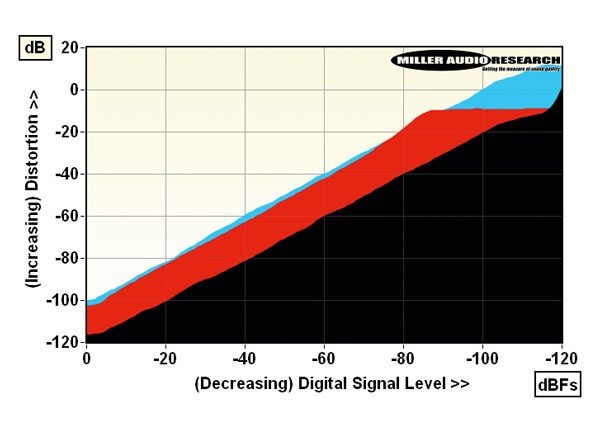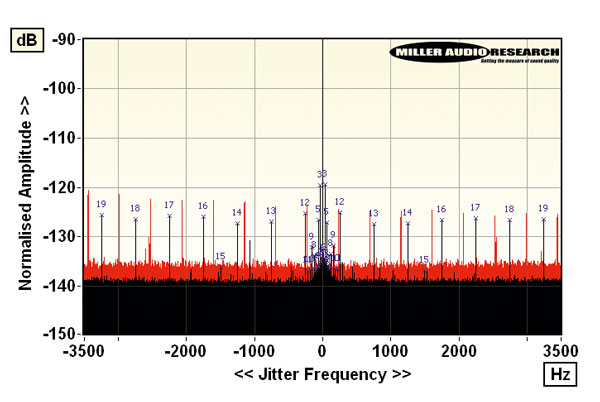JBL CD350/SA550 Classic Lab Report
As the digital engineering inside the CD350 and SA550 Classic is distinct – the former based on a PCM1796 DAC and the latter an ESS9038K2M – this also informs both their technical performance and sound. For the CD350 JBL has chosen a ‘slow’ linear phase digital filter as its default, offering reduced pre/post ringing (reduced time domain distortion) but traded against a poor 7dB stopband rejection and rolled-off top-end, falling steeply beyond 15kHz to –3.3dB/20kHz. The analogue line output is to a good 2.2V standard, from an equally standard 48ohm source impedance, but it’s also phase-inverted so you might want to bear this in mind before comparing the CD350 with any other ‘comparable’ player. Otherwise, the A-wtd S/N ratio is a good 106dB and stereo separation >100dB across the 20Hz-20kHz audio range. Low-level linearity holds true to within ±0.5dB over a 100dB dynamic range while distortion – mainly a simple 2nd harmonic at high signal levels – peaks at a very respectable 0.00015-0.00075% [see Graph 1, below].
Higher sample rate media, up to 96kHz/24-bit WAV/FLAC, is accommodated via the CD350’s USB-A input, but the resolution realised here is generally lower than that achieved via CD/CD-R/CD-RW discs in the same player. Distortion is higher (though not especially ‘high’) at 0.0009% but harmonics range out to the 9th, 11th, etc. Bit depth also looks to be truncated to <16-bit [red trace, Graph 1] and the A-wtd S/N is a reduced 102dB. Jitter is well suppressed in both modes [see Graph 2, below] although the ~117psec recorded for CD is simply a reflection of the residual 16-bit J-test data pattern. The 97psec pattern revealed for 24-bit USB-A data is shown via markers in Graph 2. PM


| Maximum output level / Impedance | 2.20Vrms / 48ohm |
| A-wtd S/N ratio (CD / USB-A) | 106.1dB / 102.1dB |
| Distortion (1kHz, 0dBFs/–30dBFs) | 0.00015% / 0.0035% |
| Distortion & Noise (20kHz, 0dBFs/–30dBFs) | 0.00075% / 0.005% |
| Frequency response (20Hz-20kHz) | +0.0 to –3.33dB |
| Digital jitter (CD / USB-A) | 117psec / 97psec |
| Resolution @ –100dB (CD / USB-A) | ±0.5dB / See Lab Report |
| Power consumption | 6W (1W standby) |
| Dimensions (WHD) / Weight | 449x79x282mm / 5.8kg |
| Price | £599 |























































